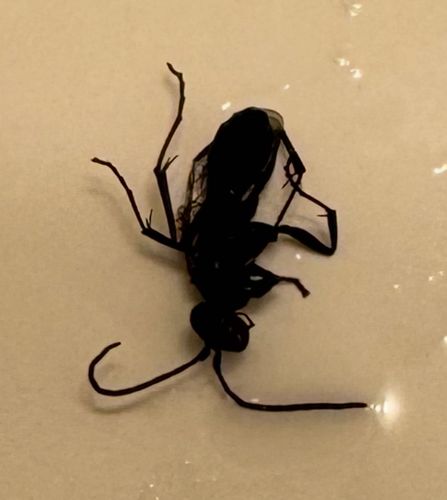Spider Wasp
Scientific Name: Pompilidae (various genera and species within the family)
Order & Family: Order: Hymenoptera, Family: Pompilidae
Size: Typically 10-30 mm (0.4-1.2 inches), but can vary significantly by species, with some tropical species reaching up to 50 mm (2 inches).

Natural Habitat
Spider wasps can be found in a variety of habitats worldwide, including grasslands, forests, deserts, and urban areas, wherever there are spiders to hunt. They often build their nests in the ground, in existing cavities, or under rocks or logs.
Diet & Feeding
Adult spider wasps typically feed on nectar from flowers and sometimes honeydew. The larvae are carnivorous, feeding on the paralyzed spider provided by the female wasp.
Behavior Patterns
Spider wasps are solitary, meaning they do not live in colonies. Females are known for their hunting behavior, paralyzing spiders with their sting and then dragging them to a burrow or nest site to lay an egg on them. The larva then feeds on the paralyzed spider. Males do not participate in hunting or caring for offspring. They are active during the day.
Risks & Benefits
Potential risks include a painful sting for humans if provoked or accidentally encountered, though they are generally not aggressive. The sting is potent due to their ability to paralyze large spiders. Benefits to the ecosystem include their role in controlling spider populations, making them a natural pest control agent. They are also pollinators when feeding on nectar.
Identified on: 8/25/2025